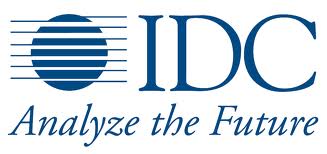 Singapore and Hong Kong, April 28, 2014 – According to International Data Corporation (IDC) Asia/Pacific Semiannual Telecom Services Tracker, the Asia/Pacific excluding Japan (APeJ) fixed broadband* market reached a value of USD 20.3 billion in 1H2013, showing 5.2% Half on Half (HoH) growth. The region used to see more than 20% fixed broadband growth in previous years, powered by the aggressive operator rollouts and the government-driven broadband projects in markets such as China, Australia, Singapore and Malaysia. However the growth in mobile broadband is starting to slow the demand for fixed broadband services. The mobile only household is on the rise. Despite the pressures the APeJ broadband market will continue to grow at 12.1% CAGR (Compounded Annual Growth Rate) for the next five years. Emerging markets like Indonesia, the PRC, Thailand and Malaysia still enjoy encouraging growth.
Singapore and Hong Kong, April 28, 2014 – According to International Data Corporation (IDC) Asia/Pacific Semiannual Telecom Services Tracker, the Asia/Pacific excluding Japan (APeJ) fixed broadband* market reached a value of USD 20.3 billion in 1H2013, showing 5.2% Half on Half (HoH) growth. The region used to see more than 20% fixed broadband growth in previous years, powered by the aggressive operator rollouts and the government-driven broadband projects in markets such as China, Australia, Singapore and Malaysia. However the growth in mobile broadband is starting to slow the demand for fixed broadband services. The mobile only household is on the rise. Despite the pressures the APeJ broadband market will continue to grow at 12.1% CAGR (Compounded Annual Growth Rate) for the next five years. Emerging markets like Indonesia, the PRC, Thailand and Malaysia still enjoy encouraging growth.
“Among the broadband services, Fiber-To-The Premise (FTTP) is driving the growth in APeJ region, and China contributes the biggest market share of both total fixed broadband and FTTP,” says Sherrie Huang, Research Manager of IDC’s Asia/Pacific Telecommunications Group. “Especially in the fast growing FTTP market, the China boom is just starting with the giant market volume, aggressive operator plans and the encouraging government policies such as the ‘Broadband China’ strategy with the 8-year broadband development plan. China has become and will continue to be the biggest driver of Asia Pacific FTTP market growth.”
The fast growing bandwidth demand, driven by cloud, video and other bandwidth-hungry applications, have led to bandwidth upgrade taking place across Asia/Pacific countries, typically the fiber services replacing DSL and cable. While operators are spending more on network upgrades to satisfy market demand, the revenues and ultimately the return on investment is being squeezed by over the top players (OTTPs) offering rich-media applications which are bandwidth intensive as well as voice services which are chipping away at the core of the operators revenue streams. Sustaining revenue growth and profitability will be challenging.
“Leading operators have moved out of their comfort zone developing their ICT service capabilities, bundling connectivity with value added services, and discovering new revenue sources such as media and e-commerce,” adds Huang. “Some have partnered with OTTPs to enrich the portfolio and to drive innovation. Carriers will continue to adjust their business model and partner strategies as competition intensifies”
About IDC Trackers
IDC Tracker products provide accurate and timely market size, vendor share, and forecasts for hundreds of technology markets from more than 100 countries around the globe. Using proprietary tools and research processes, IDC’s Trackers are updated on a semiannual, quarterly, and monthly basis. Tracker results are delivered to clients in user-friendly excel deliverables and on-line query tools. The IDC Tracker Charts app allows users to view data charts from the most recent IDC Tracker products on their iPhone and iPad.
About IDC
International Data Corporation (IDC) is the premier global provider of market intelligence, advisory services, and events for the information technology, telecommunications, and consumer technology markets. IDC helps IT professionals, business executives, and the investment community to make fact-based decisions on technology purchases and business strategy. More than 1,000 IDC analysts provide global, regional, and local expertise on technology and industry opportunities and trends in over 110 countries. In 2014, IDC celebrates its 50th anniversary of providing strategic insights to help clients achieve their key business objectives. IDC is a subsidiary of IDG, the world’s leading technology media, research, and events company. You can learn more about IDC by visiting www.idc.com.
